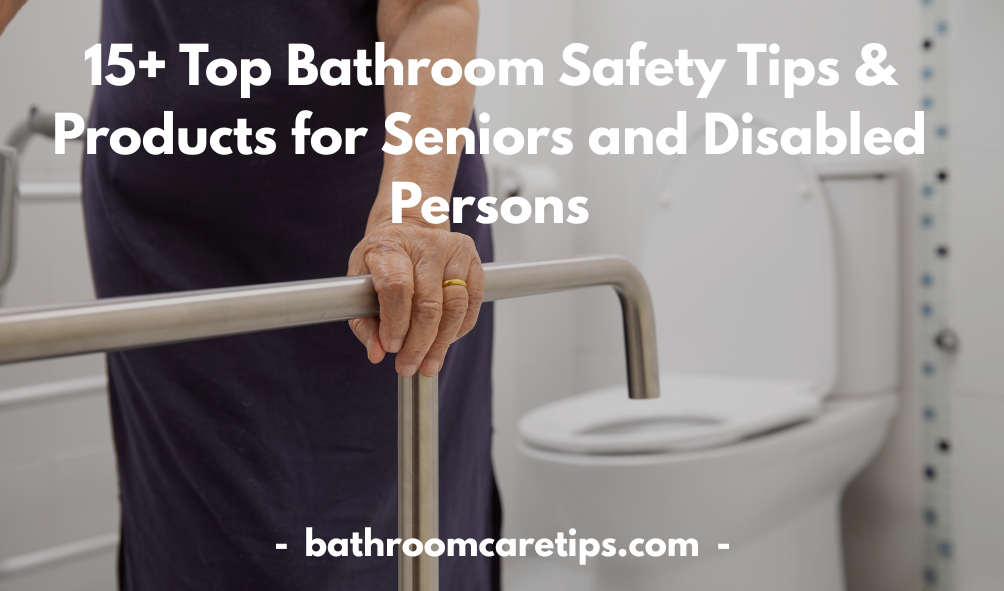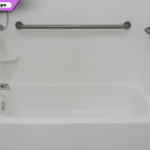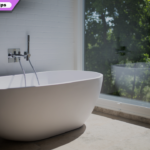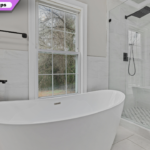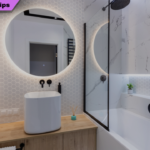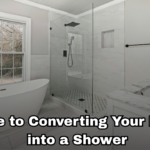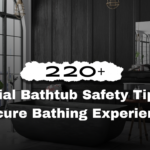Let’s face it—your bathroom might not seem like a dangerous place, but did you know it’s one of the most accident-prone areas in your home? Whether you’re worried about slippery floors, electrical mishaps, or making it elderly- and child-friendly, safety in bathroom should never be taken lightly.
This comprehensive guide dives deep into safety in the bathroom, sharing smart, practical, and life-saving tips that help everyone—from toddlers to seniors—stay safe
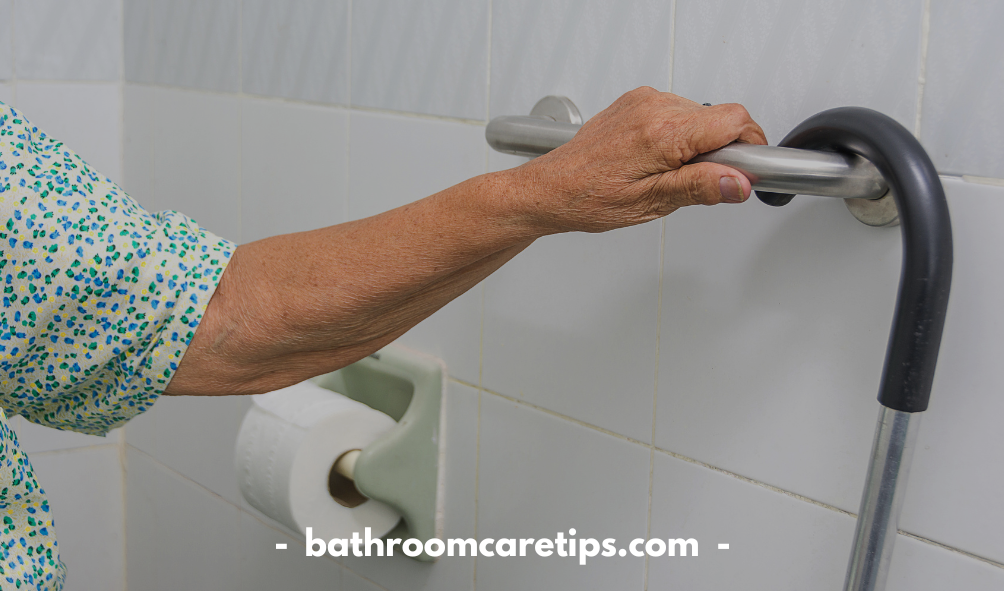
Why Bathroom Safety Matters
The Most Accident-Prone Area in Your Home
More accidents happen in the bathroom than in any other room. The combination of water, hard surfaces, and slippery conditions makes it a perfect storm for slips, falls, and injuries.
According to the CDC, over 230,000 people are injured in bathrooms each year, with a majority of incidents involving slipping or tripping.
Who is at Risk? (Kids, Elderly, and Everyone In-Between)
You may think you’re careful, but accidents don’t discriminate. Children, seniors, and people with mobility challenges are most at risk, but even healthy adults can fall victim to safety hazards in the bathroom.
Common Safety Hazards in the Bathroom
Slippery Floors and Water Spills
That damp tile might look clean, but it’s a major slip hazard. Whether it’s spilled water, soap suds, or shampoo residue, slippery floors are the number one enemy of bathroom safety.
Electrical Safety in the Bathroom
Water and electricity? Big no-no. But it’s easy to forget this when you’re charging an electric toothbrush near a sink or using a hairdryer near the bathtub. Always follow electrical safety in the bathroom guidelines like using GFCI outlets and keeping cords away from water sources.
Health and Safety Hazards in the Bathroom
Mold, mildew, and bacteria love your bathroom’s moist environment. These aren’t just gross—they’re health risks, especially for people with allergies or respiratory issues.
Sharp Edges, Glass, and Fixtures
Glass shower doors and countertops might look fancy, but if they’re not made of safety glass in bathrooms, they can shatter dangerously. Likewise, sharp corners and metal fixtures pose injury risks during falls.
Top Safety Measures in the Bathroom
Installing Non-Slip Mats and Flooring
Add anti-slip mats both inside and outside the tub or shower. For next-level protection, consider slip-resistant vinyl or rubber flooring.
Safety Handles in the Bathroom
Safety handles in bathroom areas like near the toilet or bathtub help prevent falls and support users as they move around.
Safety Bars and Rails: What, Where, and Why
Installing safety bars in bathroom zones makes a massive difference in accident prevention.
How to Install Safety Bars in the Bathroom
Use wall studs for secure mounting, and place bars horizontally for support and vertically for entry/exit points. Need help? You can Google “how to install safety rails in bathroom” or hire a local contractor.
Best Location to Place Safety Bars in a Bathroom
- Inside the shower (vertically and horizontally)
- Next to the toilet
- Near the tub edge
- By the entrance if steps or elevation exists
Using Safety Glass in Bathroom Windows and Mirrors
Regular glass can become lethal in an accident. Safety glass in bathroom windows and mirrors is laminated or tempered to prevent shattering into dangerous shards.
What is Safety Glazing in Bathrooms?
Safety glazing in bathrooms is a building regulation that ensures windows and glass panels meet safety standards to reduce injury.
Creating a Bathroom Safe for the Elderly
Safety in the Bathroom for Elderly People
Falls in the elderly can be devastating. Use walk-in tubs, raised toilet seats, grab bars, and bathroom safety rails for peace of mind.
Bathroom Safety Equipment for Seniors
Look for:
- Adjustable shower chairs
- Transfer benches
- Long-handled sponges
- Handheld showerheads
Comfort and Safety in the Bathroom for Seniors
It’s not just about being safe—it’s about feeling safe. Adequate heating, soft lighting, and easy-to-use controls enhance comfort and boost confidence.
Child Safety in the Bathroom
Baby-Proofing Your Bathroom
Keep sharp objects, medicines, and cleaning products locked away. Install soft covers on faucet edges, and always empty bathtubs after use.
Supervision and Safety Rules in the Bathroom
Never leave young children unattended. Teach simple safety rules in the bathroom, such as:
- Don’t touch plugs or switches
- No running on wet floors
- Always ask an adult for help
Bathroom Safety in Showers and Tubs
Shower Chairs, Anti-Slip Tape, and Grab Rails
If you have trouble standing, drive medical bathroom safety shower chairs and stools make bathing much safer. Anti-slip tape is affordable and effective too.
Walk-in Tubs vs. Traditional Tubs: Which is Safer?
Walk-in tubs are designed for elderly and disabled users. They reduce the need to climb and lower the risk of falling, making them a top pick for bathroom safety in shower areas.
DIY Installation Tips
How to Install Safety Rails in the Bathroom
Want to do it yourself? You’ll need:
- A stud finder
- Drill and screws
- Measuring tape
- Silicone sealant (to prevent moisture seepage)
Tools and Materials You’ll Need
- Grab bar kit
- Screwdriver
- Anchors for hollow walls
- Spirit level
Follow the instructions carefully or search “installing safety bars in bathroom” on YouTube for tutorials.
Extra Tips to Boost Safety in the Bathroom
Lighting and Visibility
A well-lit bathroom can help prevent bumps, stumbles, and confusion—especially during late-night visits.
Keeping Cleaning Products Out of Reach
Store all chemicals high up or in locked cabinets to prevent poisoning accidents, especially in homes with kids.
Emergency Preparedness – What If Something Happens?
Install an emergency pull cord or waterproof panic button in homes with seniors. Know your local emergency contacts.
Local Solutions and Services
Bathroom Safety Products in India
From safety rails to anti-slip tiles, bathroom safety products in India are becoming more available online and offline. Check Amazon India, Flipkart, or your local showroom.
Contractors Installing Bathroom Safety Bars Near You
Search “contractors installing bathroom safety bars in Garden Grove CA” (or your city) to find professionals nearby.
Bathroom Safety Rentals and Showrooms
Need temporary equipment? Look into bathroom safety rentals in Kingston NY or your local medical supply rental service.
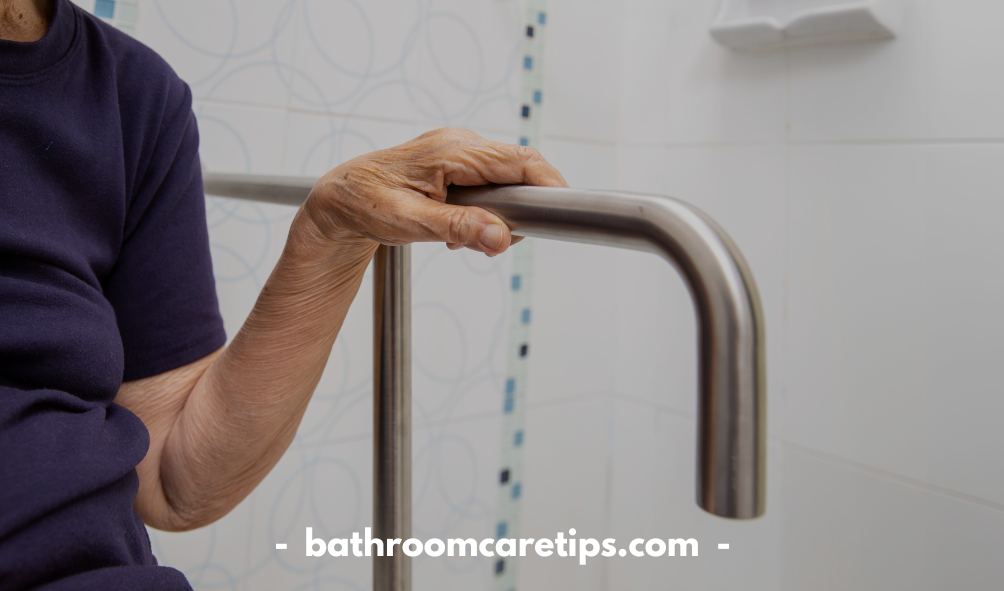
Rules, Regulations & Requirements
Are Safety Bars in Bathrooms Required in Philadelphia?
Building codes vary. In some U.S. cities like Philadelphia, certain housing codes may require aret safety bars in bathrooms for rentals or care homes.
Health and Safety Regulations in the Bathroom
Always comply with health and safety regulations in bathroom renovations to avoid fines and ensure peace of mind.
The Smart Buyer’s Guide to Bathroom Safety Products
What to Look for When Buying Safety Equipment
- Non-rust material
- Easy-grip texture
- ADA compliance
- Customer reviews
Trusted Brands and Products
Check out Drive Medical, Carex, and Moen—brands known for durable and accessible safety solutions.
Accessible Bathroom Design for Seniors and Disabled Users
Designing an accessible bathroom isn’t just about comfort—it’s about preserving dignity and independence. From layout to fixtures, every detail matters when it comes to ensuring bathroom safety for elderly and disabled persons.
How to Make a Bathroom Wheelchair Accessible
A wheelchair-accessible bathroom must allow easy maneuvering, have wide doorways (at least 32 inches), roll-in showers, and lowered sinks or vanities.
Essential Bathroom Modifications for Disabled Persons
- Replace bathtubs with curbless or roll-in showers
- Install motion sensor lighting
- Lower countertops and mirrors
- Use lever-style faucet handles for arthritis sufferers
Best Walk-In Tubs and Showers for the Elderly
Walk-in tubs with doors, built-in seating, and anti-scald technology offer a safer, more comfortable bathing experience for seniors and mobility-impaired users.
Benefits of a Raised Toilet Seat for the Elderly
Raised toilet seats reduce the distance needed to sit or stand—crucial for people with knee or hip issues. Add arm supports for extra help.
Bath Transfer Benches and Sliding Shower Seats
Transfer benches help users enter and exit the tub or shower safely. Sliding versions make it even easier for caregivers to assist without lifting.
Voice-Activated and Smart Bathroom Safety Solutions
Smart tech like voice-controlled lighting, automatic flushing toilets, and emergency alert buttons are transforming bathroom safety for elderly and disabled users.
Hiring a Professional for Accessible Bathroom Remodeling
A certified aging-in-place specialist (CAPS) or accessible design contractor can evaluate your space and recommend the right bathroom safety equipment for elderly and disabled people.
Final Thoughts on Bathroom Safety
Whether you’re retrofitting your home for an aging loved one, baby-proofing for a toddler, or just being proactive, investing in safety in bathroom areas is one of the smartest decisions you’ll ever make.
Your bathroom should be a place of comfort, not danger. By taking simple steps and installing the right equipment, you can turn a high-risk zone into a safe haven.
FAQs
1. What are the most common bathroom hazards?
Slippery floors, electrical appliances near water, and sharp corners are the top hazards. Mold and poor lighting also pose risks.
2. Do all homes need bathroom safety bars?
Not necessarily, but they’re highly recommended in homes with elderly individuals, people with disabilities, or young children.
3. Can I install safety bars myself?
Yes! With the right tools and guidance, it’s a manageable DIY project. Just make sure you attach them to wall studs for strength.
4. How do I make a small bathroom safer for an elderly parent?
Use corner grab bars, non-slip flooring, a raised toilet seat, and good lighting. A shower chair or bench is also a great addition.
5. Are there government grants for bathroom safety renovations?
Yes, some countries and local governments offer subsidies or tax credits for home safety modifications. Always check local policies.
